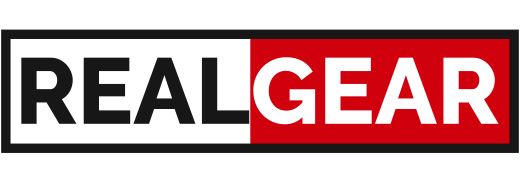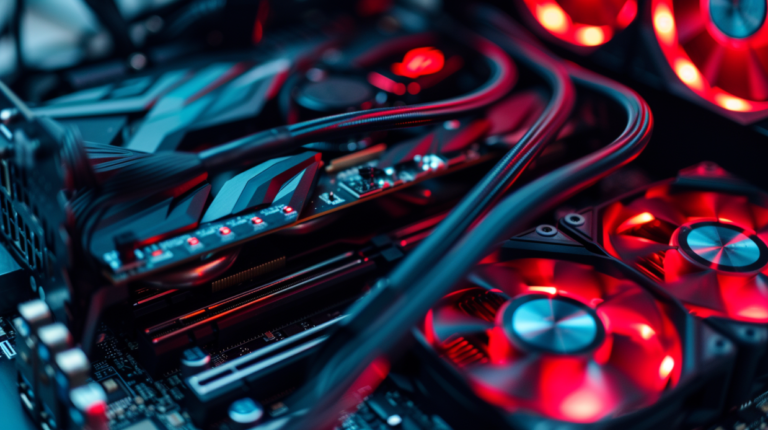Are you in the middle of putting together a new PC and wondering whether you need a sound card? While most modern motherboards feature built-in audio, sound cards are still relevant for an immersive, enjoyable gaming experience. And in this blog, we’re going to explain why!
Do you need a sound card for a gaming PC?
A gaming PC can definitely benefit from a dedicated sound card. A dedicated sound card has many advantages over onboard audio, like improved audio quality, 5.1 and 7.1 surround sound support, advanced audio equalization, reduced audio latency, and improved spatial awareness. All features that enhance immersion and give you a competitive gaming edge.
How Does a Sound Card Work?
A sound card consists of several crucial components simultaneously processing and managing audio signals, enabling the computer to capture, manipulate, and output sound.
Let’s go over the core features present in any good sound card.
Digital-to-Analogue Converter (DAC)
A digital-to-analog converter, or DAC, is the most important component of a sound card because it converts digital audio into analog signals, which human ears can then interpret.
Dedicated sound cards feature higher-quality DACs than built-in sound cards or onboard audio. They support higher sample rate, bit depth, and bit rate and offer higher SNR (Signal-to-Noise) ratio, wider dynamic range, lower THD+N (Total Harmonic Distortion + Noise), and superior audio channel separation.
Analogue-to-Digital Converter (ADC)
Analogue-to-digital (ADC) converters are the polar opposite of DACs. They’re responsible for converting incoming analog signals from line-in or microphone-in into digital signals, which can then be interpreted by the computer and stored in either lossy (MP3, AAC) or lossless (WAV, FLAC) digital audio format.
Digital Signal Processor (DSP)
A Digital Signal Processor (DSP) is a specialized electronic component that processes and manipulates digital signals by performing mathematical operations in real time. DSPs fine-tune digital audio signals and are responsible for audio equalization, sound suppression, and 3D spatial audio effects for 5.1 and 7.1 surround sound systems such as Dolby Atmos, DTS:X, and MPEG-H.
Sound Amplifier
Sound amplifiers, as the name suggests, are designed to boost the amplitude of audio signals. Sound signals lose amplitude once they pass through a DAC or ADC. That’s where sound amplifiers come into play. They ‘amplify’ the weak signals and boost them to levels suitable enough for even high-impedance external speakers or studio-grade headphones.
Dedicated sound cards have superior sound amplifiers compared to onboard sound cards. That’s one of the main reasons audio audiophiles and professional esports gamers prefer dedicated sound cards.
Audio I/O Ports
I/O ports, short for Input/Output ports, are connectors at the rear of a sound card. These ports exchange audio signals between the computer and external devices such as speakers, headsets, microphones, audio interfaces, sound mixers, etc.
Below is a table summarizing various audio I/O ports, their color codes, and their specific purposes:
| Port Type | Color Code | Purpose |
| Line-In | Blue | Connects external audio sources (e.g., CD player, mixer) to the sound card for input. |
| Line-Out | Green | Sends analog audio signals to external devices such as speakers or headphones. |
| Microphone-In | Pink | Accepts input from microphones, converting analog signals to digital for processing. |
| SPDIF (Sony/Philips Digital Interface) | Orange or Black | Transmits digital audio signals to external devices like home theater systems or receivers. |
| Digital Out | None | Sends digital audio signals to external devices, maintaining high fidelity without analog conversion. |
| Center/Subwoofer Out | Orange | Connects to dedicated speakers for center channel audio and deep bass reproduction. |
| Surround Left/Right Out | Gray | Connects to speakers for left and right surround sound in a multi-channel audio setup. |
| Surround Back Left/Right Out | None | Provides audio for rear surround speakers in advanced surround sound configurations. |
Does Sound Card Improve Sound Quality?
Yes, a dedicated sound card provides better quality than onboard audio due to higher quality DACs, ADCs, DSPs, and sound amplifiers with higher SNR and lower THD+N noise levels. They also offer better I/O functionality with support for 5.1 and 7.1 surround sound, with some sound cards offering support for spatial audio standards such as Dolby Atmos, DTS:X, and MPEG-H.
Types of Sound Cards
Sound cards are divided into three main categories:
Onboard Sound Chips
Onboard sound chips are located on the motherboard and are found on practically all modern computer motherboards. They have a single chip that relies on system resources to process sound, which is why they suffer from poor PC audio quality, high noise due to electrical interference from adjacent chips, and higher audio latencies.
Onboard sound chips are good enough for casual users but are not the best choice for serious gamers. This is due to their lack of spatial audio, hardware equalization, high signal noise, high latency, and 5.1 and 7.1 surround sound support.
Internal Sound Card
An internal sound Card is a PCIe expansion card, similar to a graphics card that slots into a motherboard. Unlike integrated sound chips, internal sound cards work independently as they come with their own processor and don’t rely on the computer’s main CPU for sound processing. This is especially true for gaming-centric sound cards that require minimal system resources, improving latency and gaming performance.
Some internal sound cards also feature spatially aware sound with support for Dolby Atmos, DTS:X, MPEG-H, and 5.1 and 7.1 surround sound for an immersive gaming experience. However, the downside of internal sound cards is that they take up between 2 and 4 PCIe lanes, which can be problematic if your motherboard has a low-end chipset with PCIe-limited lanes.
External Sound Cards
External sound cards are sound boxes that work semi-independently with their own power source. They are connected to a computer via USB or FireWire and aim to offer the same sound quality and features as an internal sound card. Their external design makes them ideal for users with a compact mini ITX PC or an HTPC.
Another perk of their external design is the lack of noise from adjacent components, which gives external sound cards superior SNR (Signal-to-Noise Ratio) than internal sound cards. The only minor downside of external sound cards is that they take up space, which could be troublesome for users with smaller desks.
Do Motherboards Come With Soundcards?
Yes, all modern motherboards come with a built-in sound card, which is also sometimes referred to as onboard audio. Built-in sound cards are the main reason dedicated sound cards have become a niche product in recent years. However, built-in ones aren’t without flaws, e.g., their audio quality isn’t up to par with dedicated sound cards because of inferior quality DACs.
Built-in sound cards only offer the bare basics in terms of I/O and typically only feature Mic-in (Pink), Line-in (Blue), and Line-out (Green), which is also sometimes called Audio-out. Additionally, built-in sound cards typically only offer dual-channel stereo without support for 5.1 or 7.1 surround sound.
FAQ
Do USB Headphones Need a Soundcard?
No. USB headphones come with a built-in DAC (Digital-to-Analogue Converter), ADC (Analogue-to-Digital Converter), and sound amplifier and don’t require a soundcard or onboard audio. You just plug them into a spare USB port on your PC or laptop, and the headphones take care of the rest.
Do You Need a Soundcard to Stream?
No, you don’t need a sound card for streaming – a built-in onboard audio is enough. However, a dedicated sound card provides superior sound quality and more I/O ports. This allows you to connect audio mixers, interfaces, and multiple microphones, ensuring clean, high-quality audio for your stream.
Can You Record Without a Soundcard?
Yes, it’s possible to record audio without a sound card with the help of a USB microphone. Popular microphones such as Shure MV7, HyperX QuadCast, and Blue Yeti are available with USB functionality and come with built-in ADCs (Analogue-to-Digital Converter), allowing you to record top-notch audio without investing in a dedicated sound card for gaming.
Conclusion
In conclusion, a dedicated sound card enhances users’ PC gaming experience. Boasting superior components like high-quality DACs, ADCs, DSPs, and amplifiers, this hardware delivers improved audio quality, reduced latency, and support for advanced surround sound.
While internal cards offer independent processing, external ones provide flexibility. Despite built-in motherboard options, dedicated sound cards remain ideal for audiophiles and serious gamers, offering a competitive edge in esports.
Having said that, a sound card is just one piece of the puzzle. For the best audio quality, you also need a sound system capable of keeping up with your sound card, so don’t forget to check out our comprehensive look at the best sound systems available in 2023.

